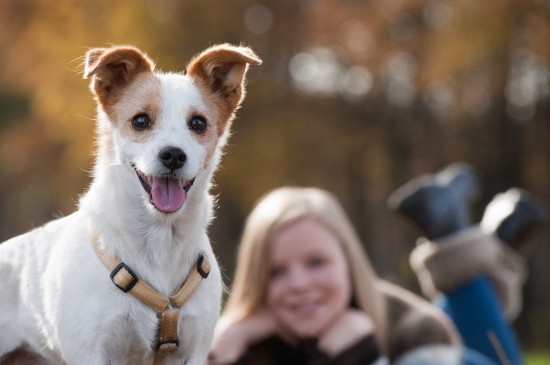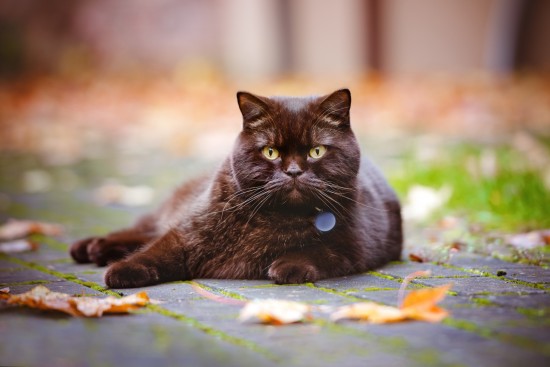
Learning how to properly leash train a dog isn’t quite as simple as you probably think but it is more than worth the effort to do it. Your dog needs to go on walks and you will enjoy taking him a lot more if he is leash trained. Dogs like being with their owners and if your dog is leash trained, your time together will be much better for both of you. The steps for proper leash training are easy to follow and should be started shortly after you get your new puppy or adult dog home and settled in.
Before you get started you need to be sure to get the proper size collar and leash. The collar should be a good fit for the size of your puppy/dog and the leash shouldn’t be too heavy or light. If the collar is too big he will slip out of it and if it’s too small it might choke him, or he could snap it. If the leash is too heavy it will hinder the training.
The first step for leash training a dog is to put the collar on him. At first the he might try very hard to get it off. Do not remove the collar if he tries to get it off. You need to let him get used to it and figure out it’s okay. It might take a little while for this to happen so be patient. Have him wear it as much as possible until he gets used to it and doesn’t notice it anymore. But keep an eye on him until he is used to it so he doesn’t hurt himself while trying to get it off.
Once he gets used to the collar the next step in leash training a dog is to actually attach a leash to the collar so he can begin to get used to that feeling. Be gentle and consistent to let your puppy know that it’s not going to hurt him. Reward with treats as needed.
Your puppy will probably pull on the leash, bite it, shake around, and basically go nuts. Just let them go free at first and make you sure don’t pull the leash. Do this in a place where he can’t get away such as a fenced in yard or your house. Just let the puppy get used to the leash by pulling it around the yard and playing with it attached to him. Eventually it won’t bother him anymore, as with the collar.
When he gets used to have the leash and collar on without really noticing it anymore, you can move on to walking him with you holding one end of the leash. Do not pull your dog around by the leash and do not let him pull you. This will not be an easy or quick process for most dogs/puppies. It’s going to take plenty of time and patience from you but he will eventually get the hang of it. Every walk will be a lesson in leash training for both your dog and you. Try as hard as you can to not ever pull or yank on the leash, and don’t let him drag you down the street either.
The ideal situation on a leash is where the dog is walking happily by the owner’s side with the excess leash hanging loose between them. When the dog stops to investigate something, the owner stops too but neither pulls nor tugs. When the owner wants to continue the walk, he calls the dog with his voice and the dog comes; he doesn’t pull on the leash. When the dog wants to go faster, he walks a little ahead, but not to the point of pulling. As I said, it’s an ongoing process that will take a while to get to this ideal point. Just keep working on it until you have both perfected it.
Continue to consistently train your dog and never forget to reward him when he gets it right. When you have finally mastered how to properly leash train a dog, they will always walk with you instead of trying to walk you.
Everyone loves a well trained dog and it makes for a much happier relationship between pet and owner. For more dog training tips visit http://dog-luv.com
 Munchkin Cat Health And Genetics
Munchkin Cat Heal
Munchkin Cat Health And Genetics
Munchkin Cat Heal
 Get the Best Chicken Runs to Maintain a Healthy and Fit Flock
Get the Best Chicken Runs to Maintain a Healthy and Fit Fl
Get the Best Chicken Runs to Maintain a Healthy and Fit Flock
Get the Best Chicken Runs to Maintain a Healthy and Fit Fl
 Does Your Dog Growl At Your Children?
Does Your Dog Gro
Does Your Dog Growl At Your Children?
Does Your Dog Gro
 How To Help Boost Your Cat’s Immune System
How To Help Boost
How To Help Boost Your Cat’s Immune System
How To Help Boost
 Do Sugar Gliders Make Good Pets?
Do Sugar Gliders
Do Sugar Gliders Make Good Pets?
Do Sugar Gliders
Copyright © 2005-2016 Pet Information All Rights Reserved
Contact us: www162date@outlook.com